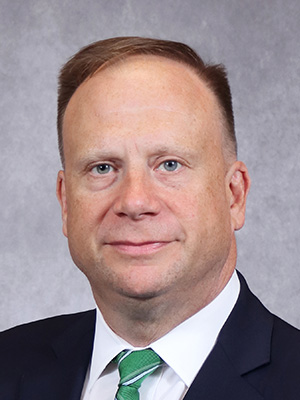 These three new colleagues’ great work has delivered some quick wins for MSU and its students.
These three new colleagues’ great work has delivered some quick wins for MSU and its students.
Over the last sixteen months, our office (the Office of the Associate Provost of Undergraduate Education) has focused on developing several key initiatives. Some of them have been quite public – like our work to advance MSU’s strategic goals of closing opportunity gaps and attaining at least an 86% graduation rate – while others have been more quietly advancing. I want to bring to light some of the work that has seen rapid (albeit muted) progress this year; namely, the office’s increasing partnerships with colleagues on campus to advance STEM education reform.
Last year, our office searched for a new Associate Dean for STEM Education, a fulltime position that would – among other things – coordinate the academic functions of the new STEM Building. It ended with the hiring of two new colleagues, Julie Libarkin and Stephen Thomas, and they were soon followed by another new addition to our office, Ryan Sweeder. Collectively, they coordinate our office’s work to initiate, contribute to, and catalyze STEM education reforms on campus to help realize MSU’s strategic goal of closing opportunity gaps and attaining an 86% graduation rate.
Julie Libarkin joined the Office of the APUE as the Associate Dean for STEM Education Research. Dr. Libarkin is a geoscientist and head of the Geocognition Research Laboratory at MSU. Her work explores how people perceive, understand, and make decisions about the earth, and you can learn more about it at her personal webpage. She is a conscientious and active mentor to students and colleagues alike, and a real catalyst for other people’s success. She has also been a leader in making STEM fields more inclusive and addressing academic sexual misconduct. All this experience and expertise make her the ideal person to bring together a diverse group of reform-minded people on campus to improve Student Success at MSU.
Stephen Thomas started in APUE last year as the Assistant Dean for STEM Teaching and Learning. He is an entomologist who studied disease evolution and pheromonal communication in insects with years of experience as a curriculum developer and community builder. He has taken on the responsibility of bringing together educators, administrators, and graduate students to help improve the effectiveness of STEM teaching across campus. Dr. Thomas is also a talented artist, and you can see some of his work at craniumation.com. Last spring, Russ White interviewed Drs. Libarkin and Thomas for MSU Today – it is definitely worth a listen!
Near the end of last year, Ryan Sweeder joined the APUE in his role at MSU’s lead for SEISMIC (Sloan Equity and Inclusion in STEM Introductory Courses). Dr. Sweeder is a chemist in Lyman Briggs College and the college’s Associate Dean for Research and Faculty Affairs. SEISMIC is a collection of educators, researchers, administrators, and student support staff who are committed to research and innovation that will help resolve the persistent problems of inequity and non-inclusion in STEM education. MSU is collaborating with nine other large universities to share data, reforms, and successes with one another to better understand both the sources of inequity and their solutions. They focus on gateway STEM courses and on reform efforts with individual instructors. This is exciting work that has a great deal of potential to improve the student experience at MSU and close our opportunity gaps.
Most progress in the academy occurs by standing on the shoulders of those who came before. These three new colleagues’ great work builds on years of work in STEM ed at MSU and the construction of the new STEM Building. MSU has a rich and deep history of leadership and innovation in STEM education, and there is substantial interest in expanding the scope and scale of this work, of leveraging it to improve STEM education at MSU, and in making it more visible both on and off campus.
As the STEM Building came “online” and courses have moved “offline” with the waning of the pandemic, Drs. Libarkin, Thomas, Sweeder and other leaders in STEM education have used the new STEM Building as both a venue and a facilitator for substantive reforms and exciting new ideas that can make STEM more inclusive, more diverse, and in many ways better. We are also seeing new resources flow into this work, both from MSU itself and from outside stakeholders. One of the most exciting is a new $2.3 million NSF grant to recruit six Native American/Indigenous post-doctoral assistants to train and work in participatory and community-engaged research. These resources will join funding from other public, private, and MSU sources as part of the overall effort to improve teaching and learning at MSU.
As always, we are keen to find and celebrate partners – both on campus and off – to improve our students’ experience and MSU’s capacity to support Student Success. We know that our most productive and most durable efforts come from partnerships. To that end, I encourage anyone interested in collaborations with anyone in the Office of the APUE to reach out directly to them or to me at largent@msu.edu
Feedback and suggestions, especially from the MSU community, welcome at largent@msu.edu.